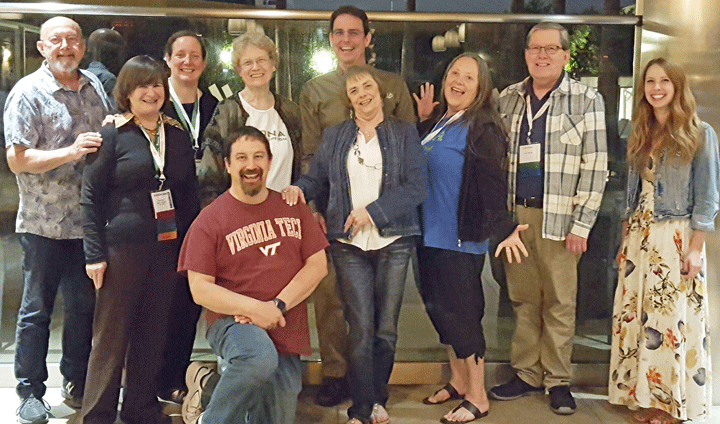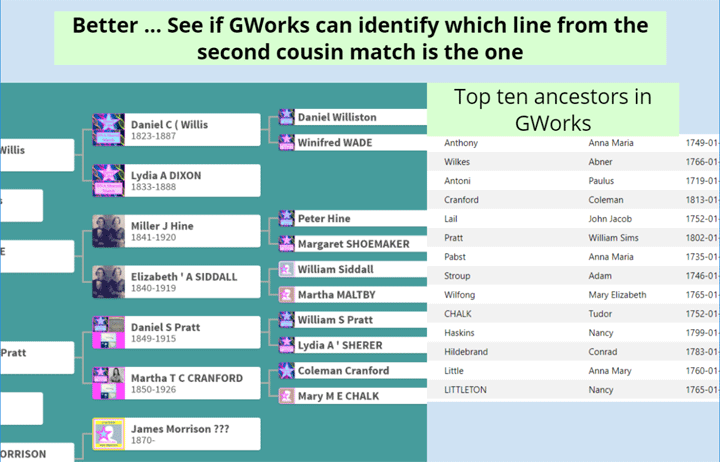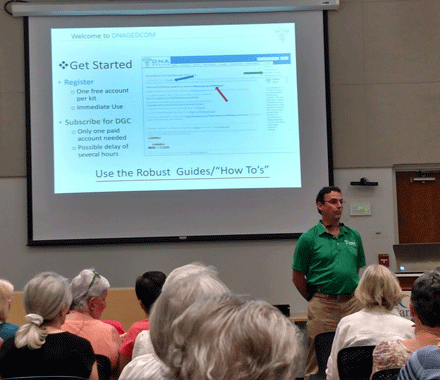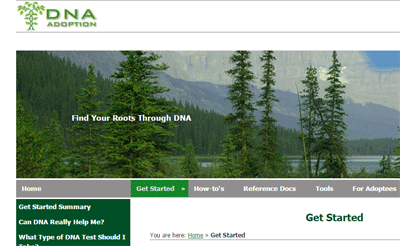The SCGS Jamboree is perhaps my favorite genealogy conference because there are so many DNA talks. Of course the i4GG conference, which is coming back to San Diego on December 8-9, is all DNA so I love that one even more.
It was great to meet so many of the people I only knew via the internet, particularly the DNAadoption crew for whom I have written several tools. Here we all are last Thursday night (thank you Leah Larkin for taking the photo!)

Front: Rob Warthen, L to R: Gale French, Barbara Rae-Venter, Pam Tabor, Barbara Taylor, Richard Weiss, Karin Corbeil, me, Don Worth, Kaitlin Mueller (Rob’s stepdaughter)
A shout out to all who came to my Triangulation talk, the slide for MyHeritage triangulation is now included. Those slides are online at https://slides.com/kittycooper/dna-triangulation-8-8-26#/
My presentation about using GWorks with unknown parentage cases went very well. This pleased me since I had worked so hard to try and make this tool understandable. I did this by showing how I used it on a few cases. Here is my favorite slide:

The idea is that you can usually find the ancestral couple to build down from on a second cousin match’s tree by using GWorks alone. Look at the top ancestors in the GWorks compare all trees to see if any of them are on the second cousin’s pedigree tree. In the image above the tree is on the left and the top GWorks matches on the right. Do you see any names in both places? Click the image to go to the slide, then click the forward > to see the answer highlighted.
All the conference videos and audios are available for sale (Click here). There were talks I did not get to in time to get a seat, and others that conflicted with each other, so I will probably buy a few myself.
One of the things I have been thinking about a lot recently is how to get my younger family members interested in family history and perhaps even DNA.
Continue reading

